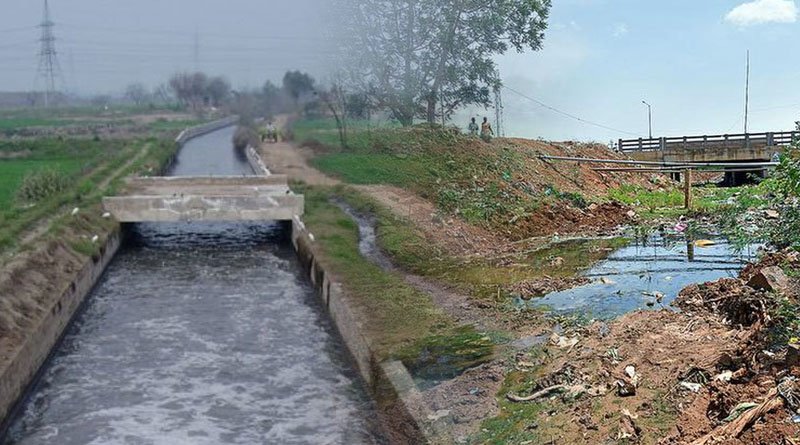According to Inam Khan, a leading grower and landlord at BRB Canal, cultivators and farmers were looking after the supply of water to the area’s tail-end fields.

The only way to alleviate the plight of tail cultivators and other affected growers in the area is to take strict measures against water theft, which results in severe water shortages, by ordering appropriate, timely, and targeted punishment for those involved.
Former chairman of the Indus River System Authority (IRSA), Punjab Irrigation Chief Engineer Rao Irshad Ali Khan, stated that influential people have been stealing water for many years through planting devices, pipes, and tubes.
According to Inam Khan, a leading grower and landlord at BRB Canal, cultivators and farmers were looking after the supply of water to the area’s tail-end fields. He claimed that feudal lords were stealing water in collusion with irrigation departments and influential political figures.
When an honest officer visits the area in response to a complaint, he claims that some irrigation department employees and their companion baildars immediately inform the corrupt powerful quarters involved in water theft.
According to Sajid Bashir, Deputy Collector Revenue in the Punjab Irrigation Department, water theft through some illegal outlets is also destroying the crops of tail-end cultivators and causing the land to become barren.
According to Bashir, there have been reports of small growers being forced to sell their land at a lower price to influential landlords in the tail-end areas of Punjab on occasion.
Agriculture is critical to economic growth because it accounts for 4% of global GDP while accounting for more than 25% of GDP in developing countries.
A healthy, inclusive, and sustainable food system is critical for meeting the world’s rapidly expanding development goals. Agriculture is the mainstay of the Pakistani economy.
It accounts for approximately 35% of GDP, nearly 59 percent of total exports, and nearly 57 percent of the workforce. Agriculture can be practised on approximately 35 million hectares of fertile land in the country.
According to agricultural statistics, the country’s total cultivated area is approximately 20.54 million hectares, of which 5.61 million hectares are rain-fed.
Domestic demand for food supply, on the other hand, has risen geometrically over the last century. According to the United Nations, at the current rate of growth, the global population will have doubled by 2050. Food demand is expected to rise to between 59 and 98 percent by then.
It has been recognised all over the world that the agriculture sector has enormous potential to address the dilemma of food security. As a result, the agriculture sector has a knock-on effect on the economies of nations.
Similarly, Pakistan’s agriculture sector must be shaped in such a way that it can meet the target of meeting projected food demand. Aside from that, climate-change-related issues such as urbanisation, water scarcity, a lack of investment, and rising production costs pose a threat to national food security.
Traditional food production cannot keep up with demand. Pakistan has become a net food importer. As a result, in addition to the current grain production system, the country must implement numerous productivity measures.
The significant shortfall in agricultural output can be filled by converting our barren lands into fertile ones. Deforestation, drought, and intensive traditional farming methods are transforming an area half the size of the United Kingdom into a desert every year.
According to a recent UN report, approximately 135 million people may lose their shelters and livelihoods due to desertification by 2030.
Pakistan has enormous agricultural potential for a developing country. Agriculture-related earnings and activities support nearly two-thirds of its population.
Arshad Shah, assistant director of the Punjab Khal Panchayat Authority (PKPA), told the news agency that the Punjab irrigation department had implemented a plan earlier to update its communication and measurement systems by installing sensors to monitor real-time water flow in the channels (Khals) under its command.
The project, which began in recent years with financial and technical assistance from the World Bank, envisions installing sensors across the barrages, distributaries, canals, and channels to monitor real-time flow with the primary goal of reducing canal water theft.
In response to a question, he stated that the Eastern Sadiqi canal system in the Punjab’s Bahawalnagar district had been chosen as a pilot project for this purpose. He stated that this canal system was chosen for a remote area known for water theft.
He told us about the project and how the gradual and phased implementation would help gauge the system’s acceptance by growers, who were the true beneficiaries of the project.